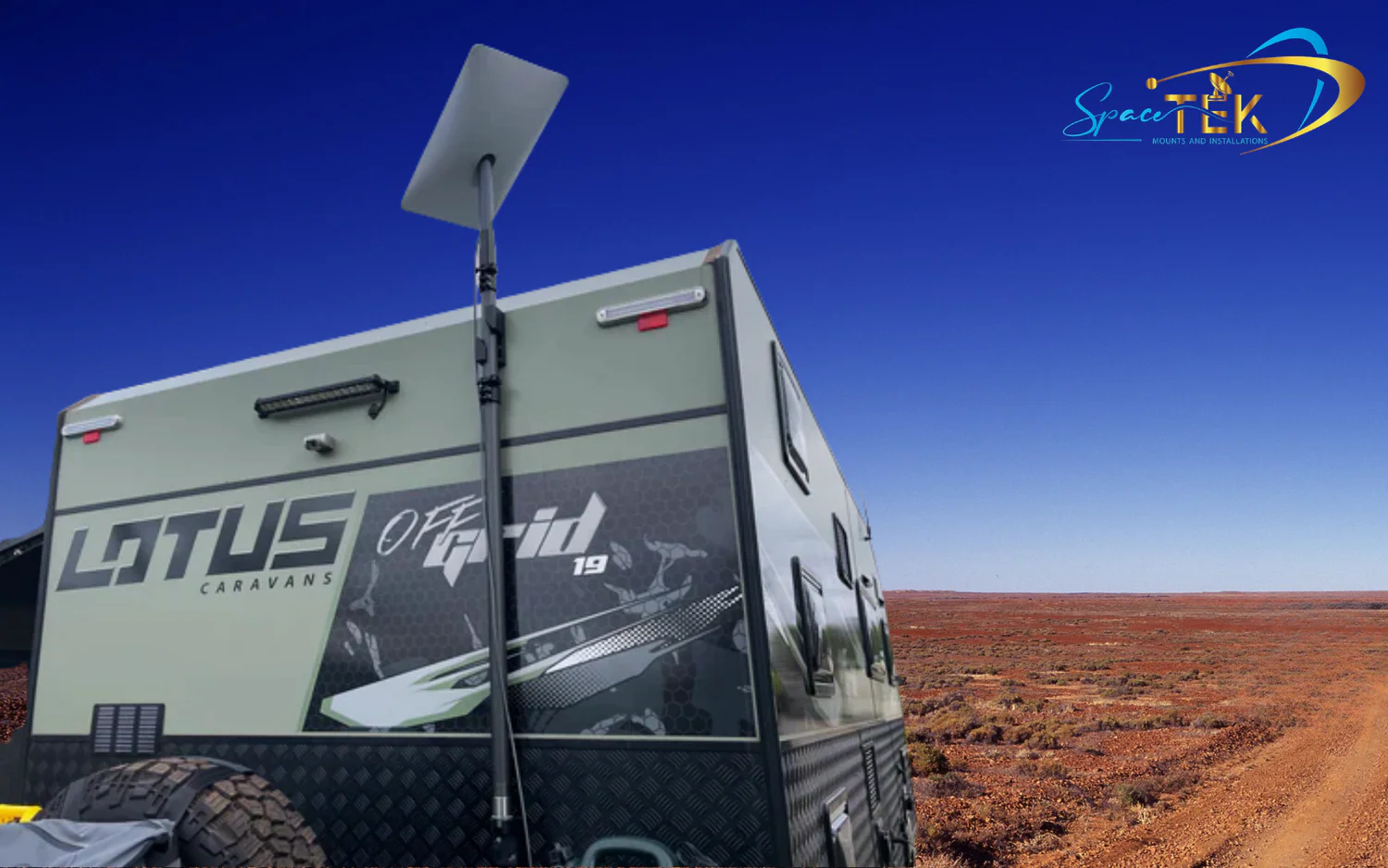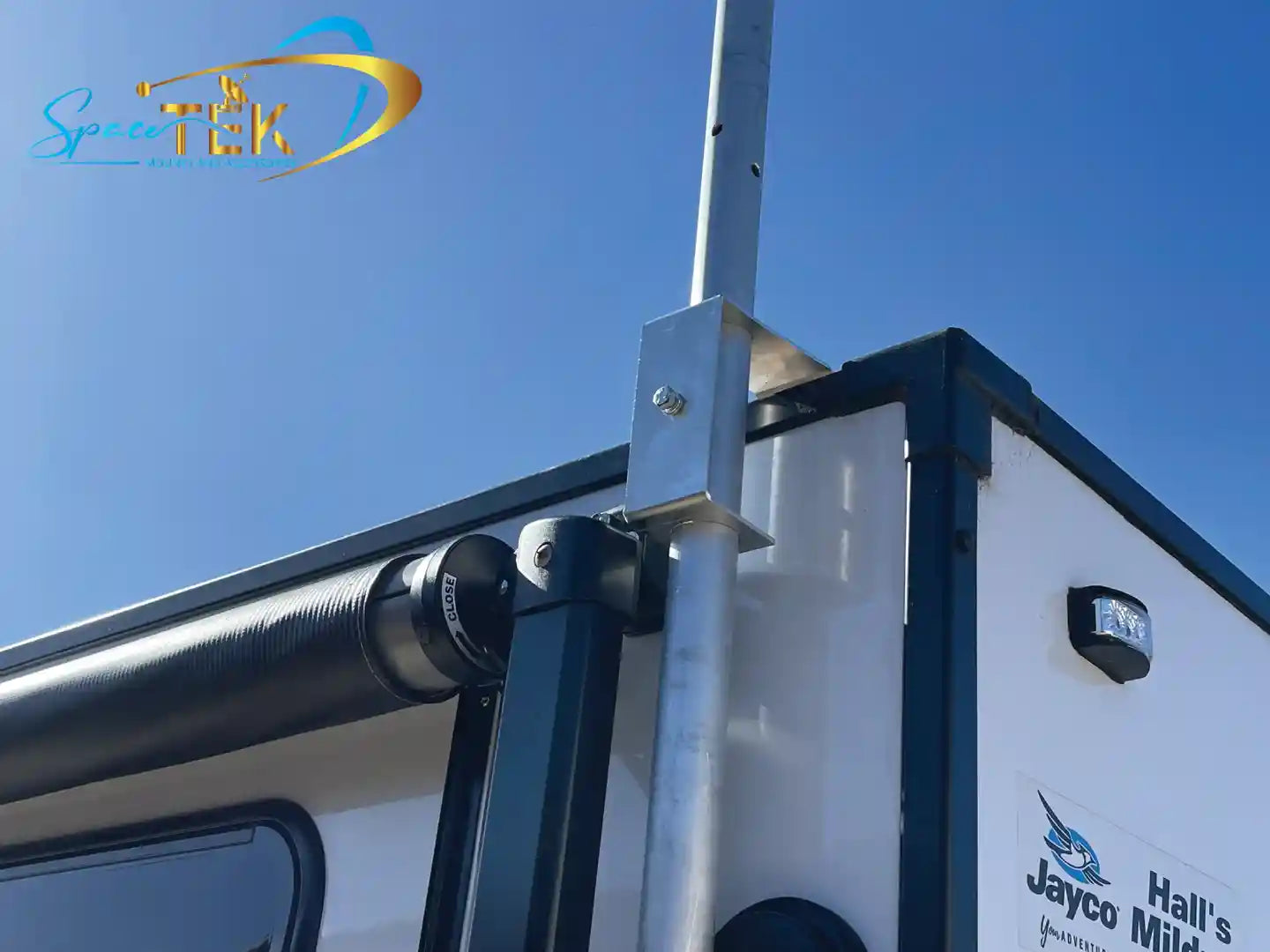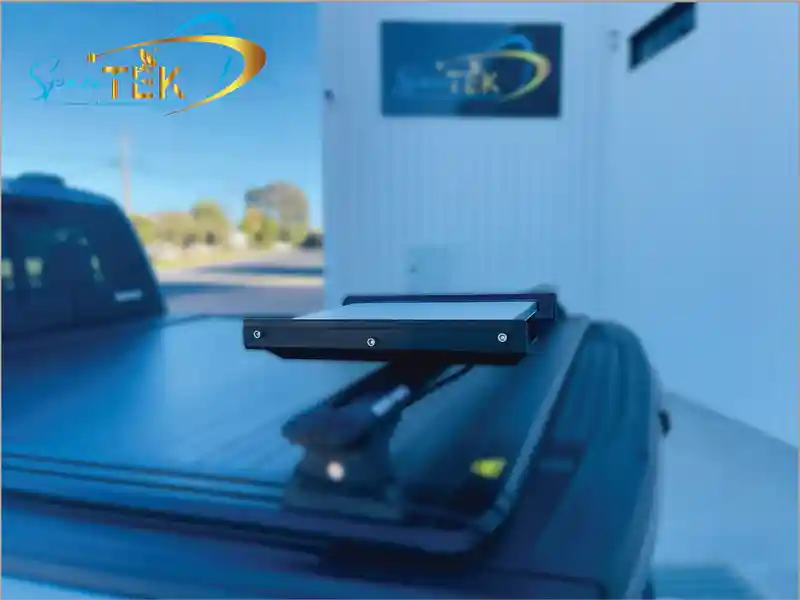Why Your Mount Choice Matters in Australia
A weatherproof mount is a system built from corrosion-resistant materials, UV-stable finishes, and sealed hardware so it can live outdoors year-round without giving up its strength. In practical terms, that means your Starlink stays where you put it and keeps performing when the weather turns.
What to look for:
- Materials: stainless steel, galvanised steel, or powder-coated aluminium
- Hardware: stainless steel screws and bolts for long-term corrosion resistance
- Finishes: UV-resistant powder coating or galvanised coating
- Sealing: gaskets and sealed connections to stop water ingress
- Durability: engineered to handle wind loads and coastal conditions
Australia's climate is unforgiving. From cyclonic gusts in the north to hot, UV-intense summers and salt spray along the coast, a mount is exposed to a lot more than a quick shower. The wrong choice doesn't just look shabby after a season; it can compromise signal quality, reduce lifespan, and in a worst-case scenario send expensive gear sliding off a roof. According to the Bureau of Meteorology, Australian coastal areas experience some of the highest UV index readings globally, making UV resistance essential for outdoor equipment.
Choosing a weatherproof mount is highly recommended in most Australian conditions to ensure long-term reliability. Every component needs to resist our environment and keep your setup reliable for the long haul. Our Mast adapter for Dishy Rectangle Gen 2 exemplifies this approach with its galvanised steel construction and stainless fasteners.
I'm Aaron Wroblewski. After 25 years working in remote communications across Australia, I've seen the consequences of poor mounting first-hand: rusted brackets, loosened fixings, and avoidable downtime. At SpaceTek, we design each weatherproof mount specifically for Australian roofs, coastal air, and outback extremes because we know what lasts and what doesn't.
Decoding the Weatherproof Mount: Built to Endure
A genuine weatherproof mount isn’t just fine in light rain; it’s engineered to hold its structural integrity for years under UV exposure, salt‑laden air, heat, and high winds. That’s the difference between a mount that quietly does its job for a decade and one that fails within months, potentially taking your Starlink dish—and your connection—down with it.
Key features of a superior weatherproof mount
At SpaceTek, we pay close attention to materials and design because Australian conditions are demanding.
The Building Blocks: Materials That Defy the Elements
A truly weatherproof mount starts with its core materials. In Australia's tough environment, this isn't just about looking good; it's about lasting.
- Corrosion-Resistant Metals: For critical hardware like screws, nuts, and bolts, stainless steel is non-negotiable. It prevents rust from seizing threads and weakening connections. For coastal or marine environments, we go a step further, prioritising Grade 316 stainless steel. This special alloy includes molybdenum, giving it superior resistance to chloride corrosion from salt spray. For the main structural components, we use either heavy-gauge, hot-dip galvanised steel or high-grade powder-coated aluminium. Hot-dip galvanising creates a thick, metallurgically bonded zinc coating that offers sacrificial protection for decades, far outlasting cheaper finishes. This robust material choice ensures a strong, low-maintenance foundation that stands up to salt, humidity, and heat. For coastal installations, corrosion-resistant materials are strongly recommended. Learn more in our guide on Starlink for Coastal Homes Mounting Challenges by the Sea.
- Durable UV-Stable Finishes: Australia's sun is incredibly harsh, with some of the highest UV radiation levels globally. This intense UV exposure can quickly degrade standard paints and plastics, leading to chalking, fading, and peeling. Once that protective layer is compromised, the metal underneath is exposed to moisture and corrosion. Our mounts use industrial-grade, UV-stable powder coating. This thermoset polymer finish is chemically formulated with inhibitors that resist UV breakdown, ensuring the coating remains intact, flexible, and protective for years, not just a single season. This is a critical defense against premature failure in the harsh Australian climate.
Key Features of a Superior Weatherproof Mount
Beyond just materials, a superior weatherproof mount incorporates smart design and engineering to handle Australia's unique challenges.
- Engineered for Wind: A mount doesn't just hold the weight of your Starlink dish; it actively resists significant aerodynamic forces. Our designs are engineered to meet and exceed the demands of Australian wind loading standards (AS/NZS 1170.2). This involves more than just using thick metal. We incorporate strategic gusseting and bracing to prevent flex and vibration. This not only preserves signal stability during coastal gales and inland storms but also prevents long-term metal fatigue. Constant micro-vibrations can weaken welds and loosen fasteners over time, leading to catastrophic failure. Professional engineering ensures the mount remains rigid and secure for its entire service life.
- Sealed and Protected: Thoughtful design includes gaskets, sealed interfaces, and effective drainage. These features stop water from pooling or creeping into threads and cavities, which is key to long-term reliability and preventing corrosion.
- Integrated Cable Management: All-metal cable management protects your Starlink cable from harsh UV exposure and abrasion. It also keeps your setup looking tidy and significantly reduces the risk of snagging. We cover this in more detail in How Starlink Accessories Can Weatherproof Your Setup.
- Lightweight Strength Options: For mobile and portability setups, where ease of deployment and reduced weight are crucial, we offer solutions using high-quality aluminium sections and select carbon fibre components. These provide a strong, low-weight solution that's easier to handle and naturally resists corrosion.

Standard vs weatherproof: what actually changes
Using an indoor or non‑weatherproof bracket outdoors is a false economy. Here’s the practical difference you’ll notice over time:
- Materials: mild steel and basic alloys corrode; stainless hardware with galvanised steel or powder‑coated aluminium resists rust for years.
- Finish: ordinary paint chalks and flakes in UV; UV‑resistant powder coat or galvanised treatments stay intact and keep moisture out.
- Hardware: zinc‑plated screws seize and rust; stainless bolts remain serviceable for maintenance and upgrades.
- Durability: standard mounts loosen under wind loads and vibration; engineered mounts maintain alignment and structural safety.
- Lifecycle cost: cheaper mounts need earlier replacement and re‑installation; a weatherproof mount reduces total cost of ownership.
If you’re weighing options, our guide How to Find Durable Starlink Mounts for Harsh Aussie Conditions walks through the trade-offs.
Selecting the Perfect SpaceTek Mount for Australian Conditions
Choosing the right mount means matching it to your satellite dish model, your structure (roof, wall, mast, vehicle), and your environment (wind, UV, salt). SpaceTek mounts are designed with high‑quality aluminium and stainless hardware—and where weight matters, select carbon fibre components—to maximise reliability without adding unnecessary bulk. All are compatible with the dish's self-install kits and Australian build practices.
For Gen 2 (Rectangle) Dishes — fixed installs
For the original rectangular dish, start with a secure base engineered for wind and corrosion resistance. Our Mast adapter for Dishy Rectangle Gen 2 provides a robust, weatherproof interface to poles and masts.
- Best for: permanent roof or wall‑adjacent masts where strength and longevity matter.
- Materials focus: galvanised steel or powder‑coated aluminium with stainless fasteners to resist rust, and UV‑stable finishes to handle the sun.
For Gen 3/V4 (Standard) Dishes — flexible options
The updated dish benefits from mounts that manage higher wind loads without adding unnecessary weight.
- For Gen 3/V4 (Standard) users, explore our Gen 3/V4 Mounts and Accessories collection.
- If you're looking for a mount that balances rigidity and portability for travel and temporary setups, check out our Gen 3/V4 (Standard) mobility mount.
Where portability is important, look for aluminium sections and (in some mobility accessories) carbon fibre elements for stiffness‑to‑weight advantages, plus all‑metal cable management to protect the dish cable from UV.
For Mini Dishes — compact and portable
The Mini dish changes what’s possible for small sites and on the go. It still needs a mount that won’t corrode, rattle loose, or put strain on connectors.
- See our Starlink Mini collection for purpose‑built options.
- The Mini Basic In‑Motion Mount provides quick setup with weatherproof engineering.
For vehicle or rapid‑deploy use, prioritise lightweight aluminium or carbon fibre components, stainless hardware, and secure cable routing.
RV and Portability — built for movement
On the road, mounts must handle vibration, repeated setup/pack‑down, and the elements.
Look for:
- Rattle‑free clamps and braces that keep alignment under vibration
- UV‑stable, all‑metal cable management
- Corrosion‑resistant materials (stainless, aluminium) to handle coastal air
- Lightweight strength (including carbon fibre components where applicable) for easier deployment
The satellite dishes use proprietary connections—not standard VESA—so model‑specific compatibility is essential. Purpose‑built mounts protect connectors, manage load paths, and stand up to wind without adding unnecessary weight.
Installation tips for a trouble‑free setup
A quality mount deserves a careful install. A few essentials:
- Pick the right spot: Use the satellite provider's app to confirm a clear view of the sky. Think about seasonal foliage and future structures.
- Check structure first: Ensure roof trusses, brickwork, or vehicle frames can handle wind loads—not just the dish weight.
- Use the right fixings: Match fasteners to the surface (e.g., roof‑specific lag screws with proper sealing). Tighten to spec and re‑check after initial wind exposure.
- Protect the cable: Route in metal channels or outdoor conduit. Avoid tight bends and abrasion points.
- Plan safe access: Choose a location you can reach for periodic checks and cleaning.
For a deeper dive into reliable installations, explore our Starlink Installation Top Tips for a Flawless Setup and learn more about Tough Tested Trusted Spacetek Mounts Built for Australian Conditions.
Securing your connection for the long haul
In Australia, reliability comes from the ground up: corrosion‑resistant materials, UV‑stable finishes, strong engineering, and tidy cable protection. Choose mounts designed for your satellite dish model and environment, and install them correctly. Do that, and you’ll maximise performance and lifespan.
To recap, a weatherproof mount is essential for protecting your signal quality, resisting wind and salt, and ensuring safe, long-term use. SpaceTek Australia offers secure, rust-resistant, user-friendly mounts for Starlink, built specifically for tough Australian conditions and compatible with your self-install kit. For custom advice on your location, roof type, or Starlink model, please contact us.




Leave a comment
This site is protected by hCaptcha and the hCaptcha Privacy Policy and Terms of Service apply.